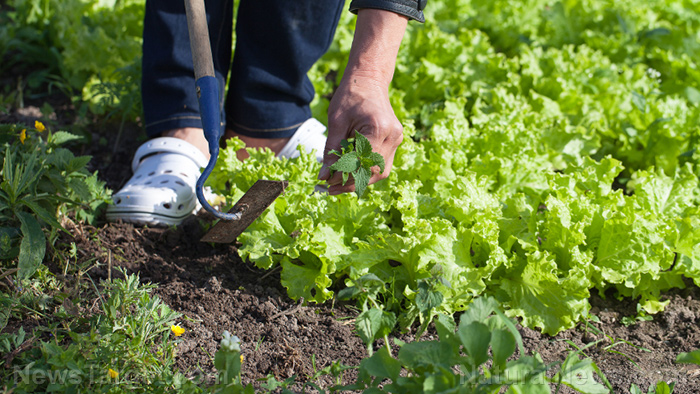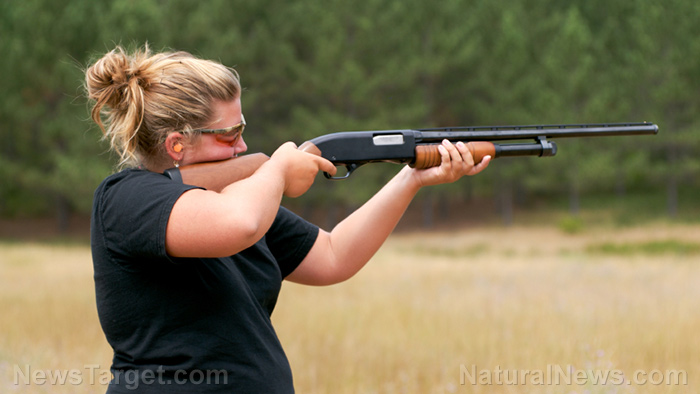Prepping on the go: How to safely store food in your car
10/27/2019 / By Grace Olson

Storing food at home is different from storing them inside your car. Whether it’s going for a short ride or getting stranded in your car during an SHTF situation, having some food stored always comes in handy, just make sure to store them properly. (h/t to BackdoorSurvival.com)
Choosing food to store
The first step to proper food storage is choosing what food you can store. Canned goods and ready-to-eat meals are expected, but there are other things to consider when picking foods. Check the tips below:
- Pick dry foods. The temperature inside the car is not regulated. Unless you’re in an Alaskan rural area, it’s bound to get hot inside the car. Uncooked foods and fresh produce will rot in such an environment. Dry foods like nuts, trail mixes, and powdered milk have a better chance of lasting longer in warm temperatures.
- Buy food that you like. People make the mistake of buying in bulk when food items go on sale. However, if nobody in your family eats them, then you’re just wasting money and storage space.
- Consider the nutritional value. Superfoods like chia seeds and dried berries are a great addition to your food supply. Not only are they healthy, they are easily stored as well. (Related: Chia seeds are the ultimate survival food for long-term storage.)
- Don’t forget condiments. If you don’t want bland food, it’s best to have some in your food supply.
How to safely store food inside the car
Once you’ve chosen the foods that you want to bring, it’s time to store them. Since cars are not usually meant for food storage, you need storage containers. Here are some of the things you can use:
100% organic essential oil sets now available for your home and personal care, including Rosemary, Oregano, Eucalyptus, Tea Tree, Clary Sage and more, all 100% organic and laboratory tested for safety. A multitude of uses, from stress reduction to topical first aid. See the complete listing here, and help support this news site.
- Coolers – These containers provide insulation for the food. If you’re only going for a short trip, you can use them to store raw food, like fish and chicken. In an SHTF situation, place frozen water bottles inside the cooler along with other foods. Not only will they keep the other foods cool, you’ll have a cold drink once they melt.
- Plastic containers – These are essential for any prepper. They can be cleaned easily, and you can safely store various items inside them. Stack these containers to save space and tie them with a rope to keep them in place.
- Baggies/Plastic wrap – These bags are useful for storing food and regulating food supply. One bag can mean one serving, making it easier for you to track how long your supplies will last. However, they’re quite dispensable. Reuse the plastic as much as you can to reduce plastic waste.
- Food packaging – The packaging of the food itself is storage. Most foods are sold packed, like granola bars and trail mixes. Just make sure to place them properly inside the car. You don’t want the packaging to break and release the contents on your seats.
- Storage for waste – A smart prepper knows that he/she should not leave any waste behind. Not only is it bad for the environment, it makes it easier to track you. Moreover, it keeps your car clean. You can use a small old box covered with plastic as a garbage bin.
Efficient storage
Packing your food supply efficiently makes it easier to access and organize them. When you’re in a hurry or in the dark, this helps save a lot of effort and time. Try some of the tips below:
- Label your foods. When storing food, make sure to write the name and expiration date on the container. You don’t want to open a bag and smell rotten food. Write the name also on the side for easy identification.
- Organize your foods into ready-to-eat packs. Before putting them inside your car, you can already divide the food items per meal. This way, you don’t risk finishing your food supply too quickly. Moreover, it saves a lot of time in the wild when you don’t need to think how you mix and match food items.
- Prepare measuring equipment. If you couldn’t divide the food into packs, measuring equipment come in handy. You can regulate how much food is eaten per meal. When you’re not on the road, you can also take the time to make ready-to-eat packs.
Proper storage is key to lasting food supply, whether it’s in your home or in your car. Learn more at FoodStorage.news.
Sources include:
Tagged Under: bug out, canned food, car storage, coolers, dried food, food packaging, food safety, Food storage, food supply, how-to, off grid, plastic containers, plastic wrap, preparedness, prepper, prepping, raw food, shelf life, survival, survival food, survival gear, travel food, vehicles
RECENT NEWS & ARTICLES
COPYRIGHT © 2017 · SURVIVAL NEWS


















